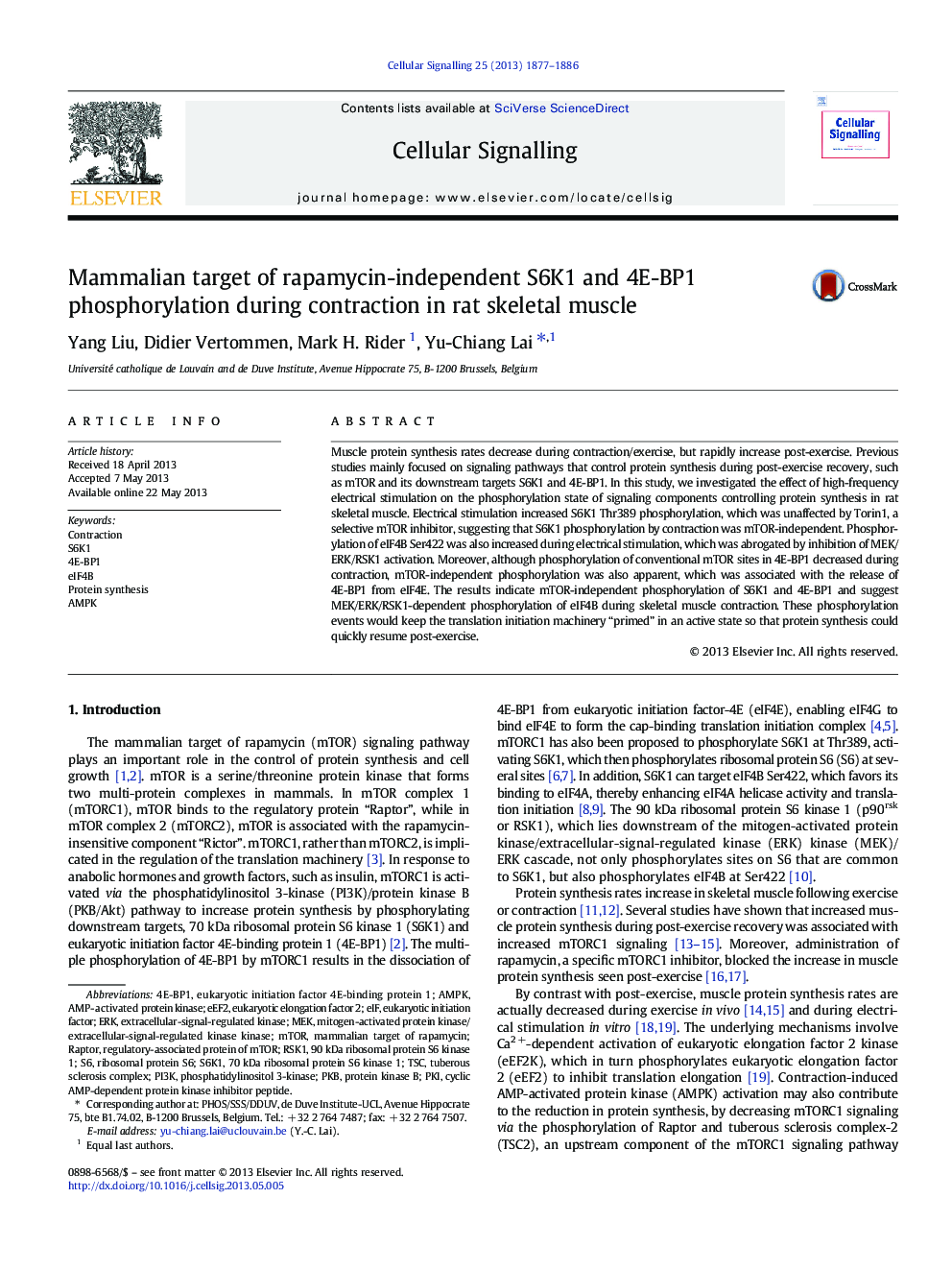| Article ID | Journal | Published Year | Pages | File Type |
|---|---|---|---|---|
| 10815439 | Cellular Signalling | 2013 | 10 Pages |
Abstract
Muscle protein synthesis rates decrease during contraction/exercise, but rapidly increase post-exercise. Previous studies mainly focused on signaling pathways that control protein synthesis during post-exercise recovery, such as mTOR and its downstream targets S6K1 and 4E-BP1. In this study, we investigated the effect of high-frequency electrical stimulation on the phosphorylation state of signaling components controlling protein synthesis in rat skeletal muscle. Electrical stimulation increased S6K1 Thr389 phosphorylation, which was unaffected by Torin1, a selective mTOR inhibitor, suggesting that S6K1 phosphorylation by contraction was mTOR-independent. Phosphorylation of eIF4B Ser422 was also increased during electrical stimulation, which was abrogated by inhibition of MEK/ERK/RSK1 activation. Moreover, although phosphorylation of conventional mTOR sites in 4E-BP1 decreased during contraction, mTOR-independent phosphorylation was also apparent, which was associated with the release of 4E-BP1 from eIF4E. The results indicate mTOR-independent phosphorylation of S6K1 and 4E-BP1 and suggest MEK/ERK/RSK1-dependent phosphorylation of eIF4B during skeletal muscle contraction. These phosphorylation events would keep the translation initiation machinery “primed” in an active state so that protein synthesis could quickly resume post-exercise.
Keywords
PKBeukaryotic initiation factor 4E-binding protein 1RSK1eIF4B70 kDa ribosomal protein S6 kinase 1PKI4E-BP1eEF2S6K1AMPKPI3KTSCERKmTORAMP-activated protein kinaseeIFContractionRaptorProtein synthesiseukaryotic elongation factor 2Eukaryotic Initiation FactorPhosphatidylinositol 3-kinaseMEKmammalian target of rapamycinRibosomal protein S6regulatory-associated protein of mTORprotein kinase BTuberous sclerosis complexextracellular-signal-regulated kinase
Related Topics
Life Sciences
Biochemistry, Genetics and Molecular Biology
Biochemistry
Authors
Yang Liu, Didier Vertommen, Mark H. Rider, Yu-Chiang Lai,
